| New York Architecture Images- galleries and notes |
| gallery- gone |

Image- New York Public Library |
 01-Astor House. November 1, 1913 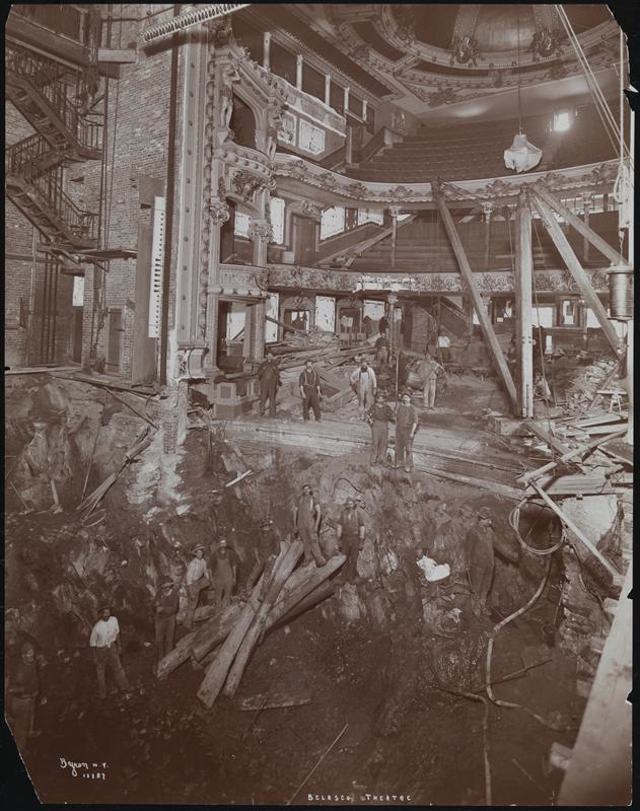 02-Belasco Theatre 1902 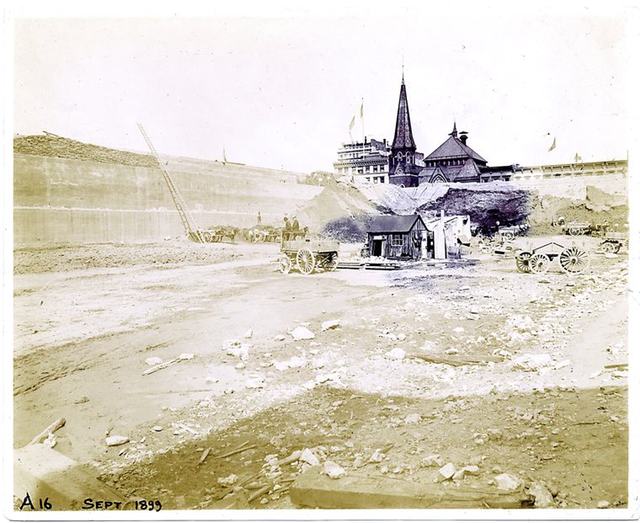 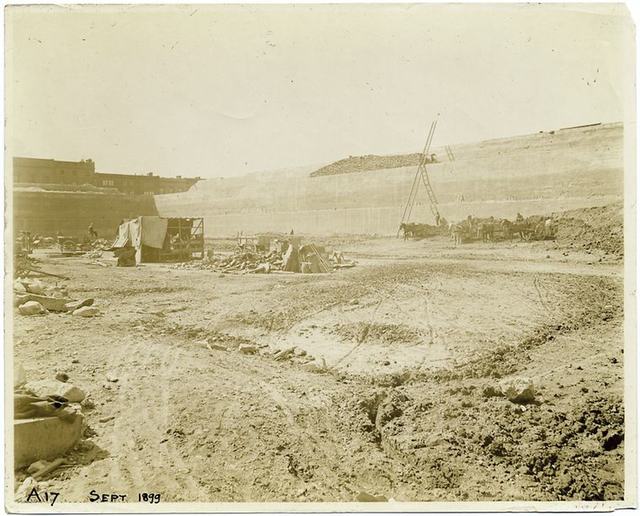 03-CrotonReservoir1899 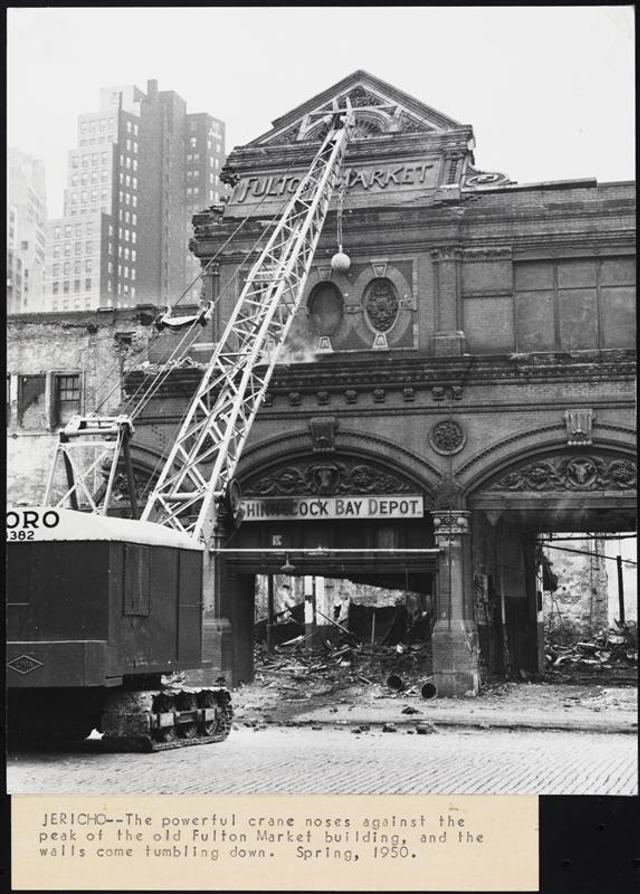 05-Fulton Fish Market. Spring 1950 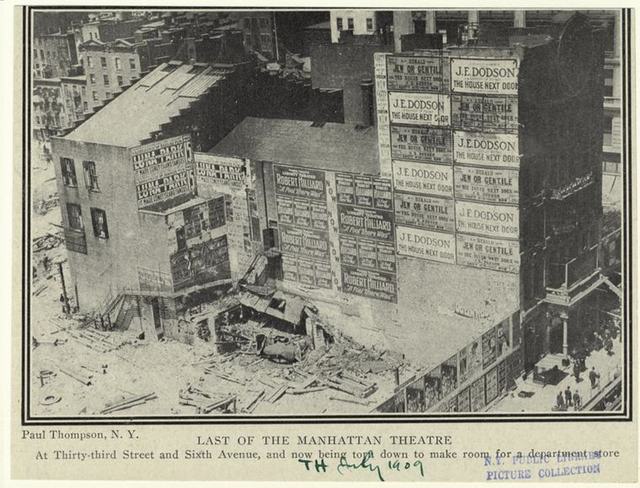 06-Manhattan Theatre, 1909 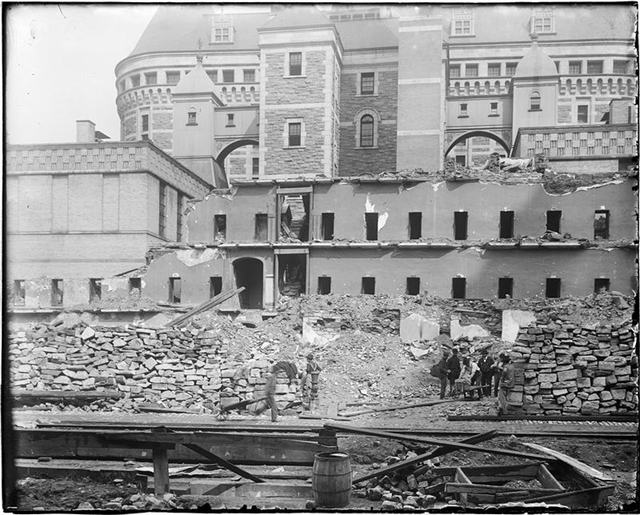 07-The Tombs, ca 1890 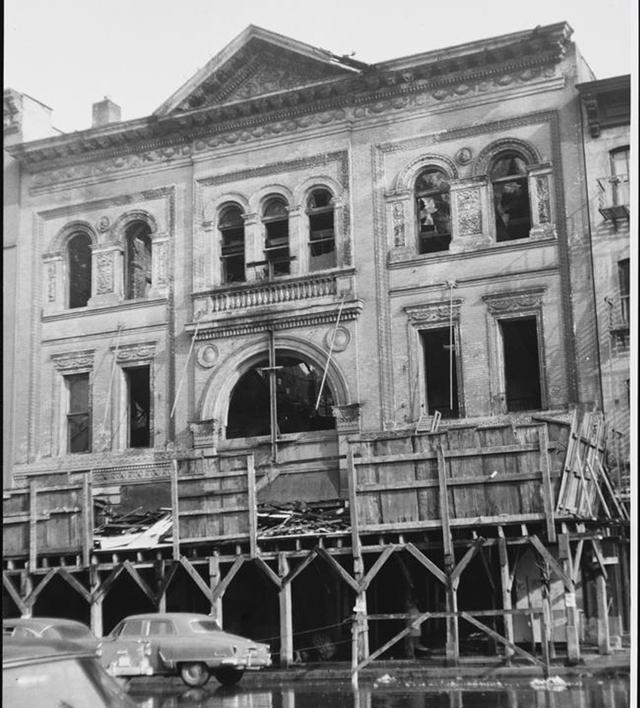 08-Theater-3rd Avenue and 31st St1955 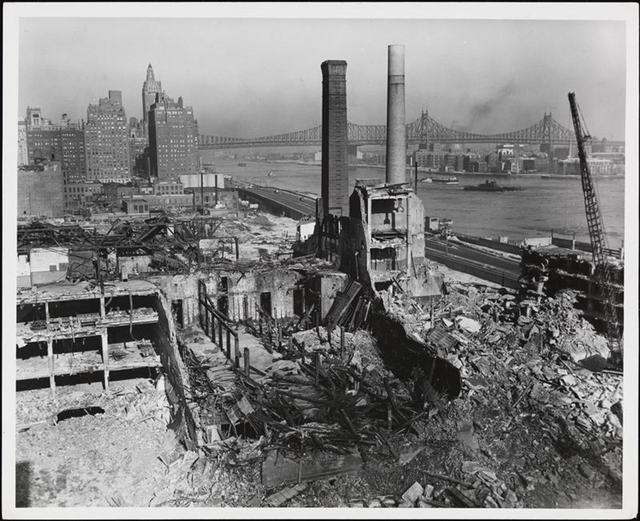 09-United Nations Headquarters. January 30, 1948 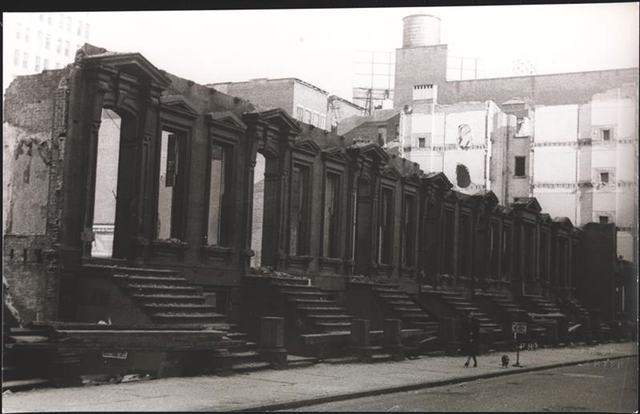 10-West 58th Street.February 13, 1939 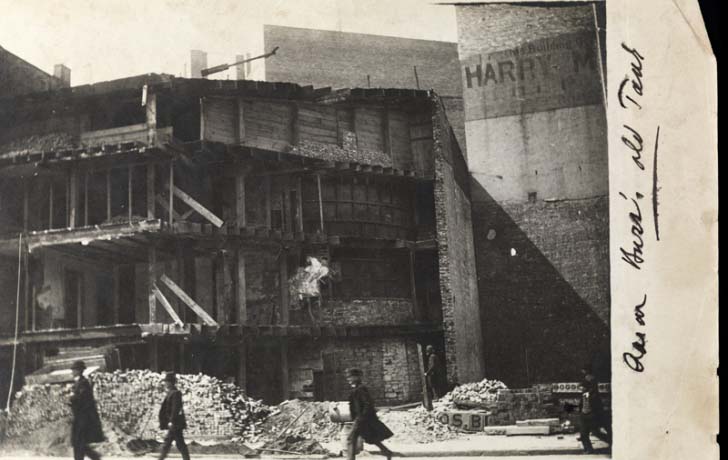 The puzzling photograph above, taken in 1890 by none other than the famed journalist and photographer Jacob Riis, is titled “Aaron Burr’s Old Tank.” It is puzzling because the tank is completely enclosed by buildings (here being demolished) and because the famed politician Burr—the man who shot Alexander Hamilton—had by that time been dead for more than 50 years. Thereby, however, hangs a tale. That tale, in turn, hinges on two of Burr’s most prominent traits, his desire to counteract Federalist power in New York and his dislike of Alexander Hamilton. As it happened, the Federalists were immensely strengthened by their control of the powerful Bank of New York, which coincidentally had been founded by Hamilton. How could Burr start a rival financial institution? Ever the schemer, Burr noted that in the late 1790s New York was suffering from a series of epidemics that were partly due to its lack of a decent water system. Perhaps, he noted slyly, he could help remedy the situation. So in 1799, while momentarily serving as a state legislator, he sponsored a bill to charter a utility company called the Manhattan Company that would bring fresh and dependable water to the city. It happened that its charter stated that the proposed institution would possess the right to use its surplus capital to engage in various financial transactions. Questioned about this, Burr cheerfully admitted that among other things this permitted the Manhattan Company to open a bank, but no one objected and the bill passed. Work began immediately on the new system. Deep wells were dug on Reade Street between Broadway and Centre Street, and the Company announced its presence by erecting a handsome structure on Chambers Street (approximately across the street from today’s Tweed Courthouse) that included a colonnade plus a statue of Oceanus standing guard. Behind it was a mini-reservoir and nearby was the tank shown in our picture, whose function was presumably to maintain pressure in the wooden water mains (made of hollowed-out logs) that gradually fanned out to reach nearby houses and neighborhood pumps. Meanwhile, however, Burr had founded the so-called—and oddly named—Bank of the Manhattan Company, which rapidly expanded and soon could see itself as a potent force countering Hamilton’s Bank of New York. He had achieved his purpose, no matter what became of his water supply system. That system indeed was faring poorly. The wooden mains kept breaking, and residents complained that the Manhattan Company refused to use its water to flush gutters and failed to repair the streets it dug up. The rapidly growing city could hardly depend on such a poor arrangement and after awhile the company quietly gave up. Even Burr himself survived it, dying in 1837. (So did his tank, which as we have seen lasted until 1890.) New York City would be without a truly dependable water system until 1842, when water piped into the city from the Croton River 45 miles north of Manhattan was finally made available to a delighted and relieved urban community. The Bank of the Manhattan Company, however, lived on, expanding and absorbing other institutions, until in the 1950s it was taken over by the Chase National Bank which thus became the Chase Manhattan Bank. More recently the Chase combined with the J. P. Morgan Bank to form today’s J. P. Morgan Chase, a true colossus. Aaron Burr would have smiled. By OLIVER E. ALLEN |